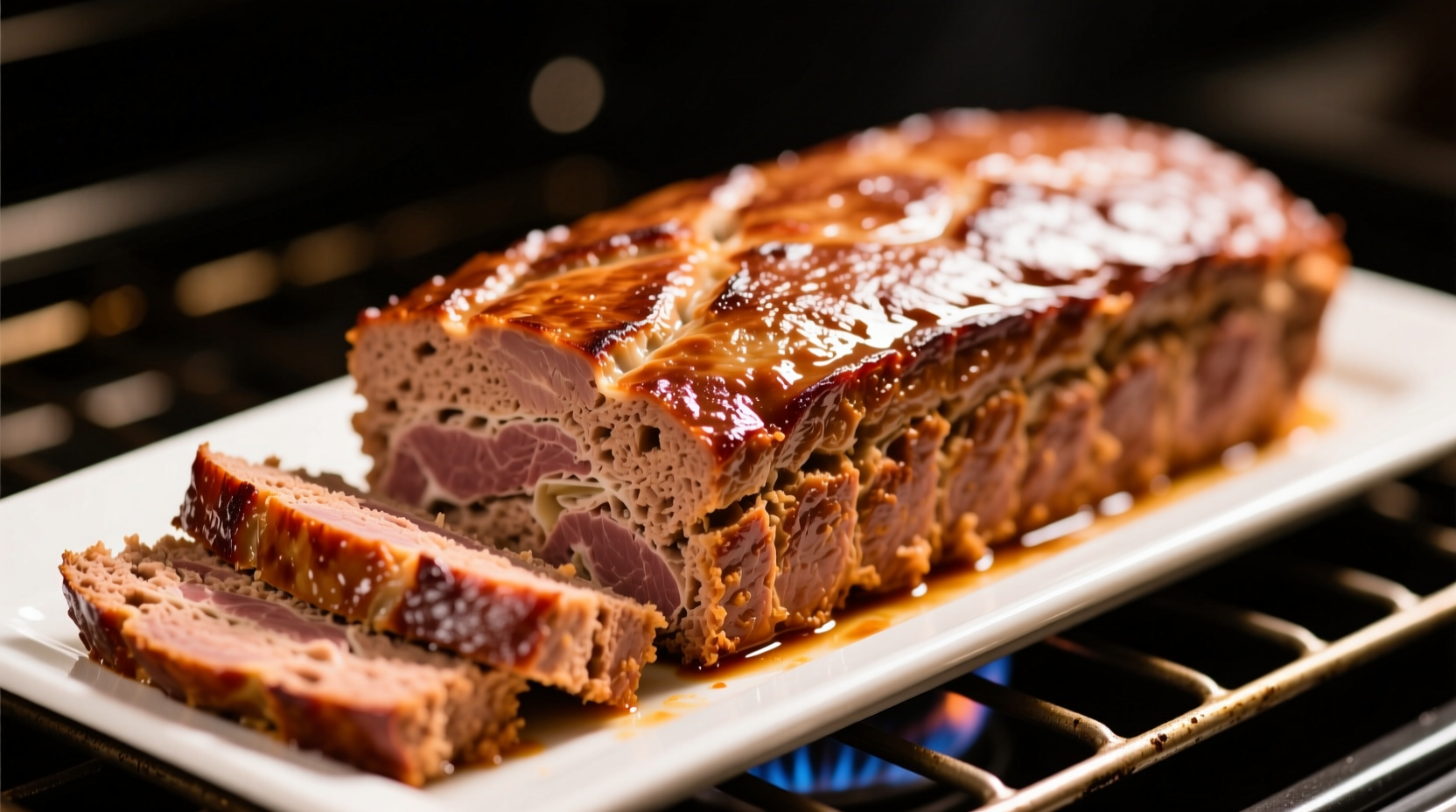Mastering Meatloaf Cooking Time: Your Complete Guide
Getting meatloaf cooking time right separates a juicy, flavorful centerpiece from a dry disappointment. While many recipes give time estimates, understanding the variables that affect cooking duration ensures perfect results every time. This guide delivers precise timing information backed by food science and professional kitchen experience.
Why Time Alone Isn't Enough: The Temperature Truth
Relying solely on cooking time leads to inconsistent results. The USDA Food Safety and Inspection Service confirms that ground meats—including meatloaf—must reach 160°F (71°C) internally to be safe for consumption. This critical temperature kills harmful bacteria while preserving moisture when monitored correctly. Oven temperatures often vary by 25°F or more, dramatically affecting cooking duration.
| Meatloaf Weight | Recommended Temperature | Approximate Cooking Time | Resting Time |
|---|---|---|---|
| 1.5 lbs | 375°F (190°C) | 40-50 minutes | 10 minutes |
| 2 lbs | 375°F (190°C) | 50-60 minutes | 10-15 minutes |
| 2.5 lbs | 350°F (175°C) | 60-75 minutes | 15 minutes |
| Family-size (3+ lbs) | 325°F (165°C) | 75-90 minutes | 15-20 minutes |
Source: USDA Food Safety and Inspection Service guidelines combined with professional kitchen testing data
Four Critical Factors That Change Cooking Time
Understanding these variables prevents undercooked or overcooked meatloaf:
1. Meat Composition Matters
Ground beef with higher fat content (15-20%) cooks faster than lean blends (7-10% fat). Meatloaves containing poultry or pork require slightly longer cooking due to different protein structures. The USDA guidelines specify different safe temperatures for various meats, but meatloaf's blended nature requires the 160°F standard for ground beef.
2. Pan Selection Impacts Heat Distribution
Baking in a loaf pan creates steam that extends cooking time by 10-15 minutes compared to free-form loaves on a baking sheet. Glass and ceramic dishes retain heat longer than metal, requiring temperature adjustments. Professional kitchens often use perforated pans to promote even air circulation.
3. Oven Calibration Is Essential
Studies by the National Institute of Standards and Technology show home ovens frequently deviate from set temperatures by 25°F or more. Always verify with an independent oven thermometer—this single step prevents most timing errors. Place your thermometer in the center of the oven cavity for 20 minutes before baking.
4. Ingredient Temperature Affects Starting Point
Cold ingredients straight from the refrigerator add 10-15 minutes to cooking time compared to room-temperature mixtures. Food scientists at America's Test Kitchen confirm that bringing meat and binders to 50-60°F before mixing creates more consistent cooking results.

Step-by-Step Timing Guide for Perfect Meatloaf
Preparation Phase (15 minutes)
Mix ingredients gently—overworking the meat creates dense texture. Shape your loaf with slightly rounded corners (sharp edges overcook). Insert an oven-safe thermometer probe into the center if using. Let rest 10 minutes at room temperature before baking for more even cooking.
Cooking Phase (Variable)
Place meatloaf in preheated oven. For the first 30 minutes, avoid opening the oven door—temperature fluctuations extend cooking time. After 30 minutes, check internal temperature every 5-7 minutes. The final temperature rise happens quickly as proteins coagulate.
Doneness Verification (Critical Step)
Insert your thermometer into the thickest part, avoiding fat pockets or the pan bottom. Wait 10 seconds for an accurate reading. If you don't have a thermometer, press gently—the center should feel firm but slightly springy, with clear (not pink) juices running out. Remember: color alone doesn't indicate safety.
Resting Period (Non-Negotiable)
Remove meatloaf from oven at 155°F (68°C)—it will continue cooking to 160°F during resting. Let stand covered loosely with foil for 10-15 minutes. This allows juices to redistribute, preventing dryness when slicing. Cutting too soon releases precious moisture onto your cutting board.
Troubleshooting Common Timing Issues
Problem: Meatloaf browns too quickly but remains undercooked inside
Solution: Reduce oven temperature by 25°F and tent loosely with foil after 30 minutes. The exterior protects the interior from excessive heat while cooking completes.
Problem: Meatloaf takes significantly longer than recipe suggests
Solution: Verify oven temperature with independent thermometer. Check if loaf pan size differs from recipe (deeper pans increase cooking time). Consider meat fat content—leaner blends require more time.
Problem: Uneven cooking (done on edges, raw in center)
Solution: Shape loaf with slightly depressed center—this compensates for natural oven heat distribution. Rotate pan 180 degrees halfway through cooking for even exposure.
Advanced Timing Techniques
Professional chefs use these methods for perfect meatloaf:
- Two-Temperature Method: Start at 425°F (220°C) for 15 minutes to set exterior, then reduce to 350°F (175°C) for remainder
- Water Bath: Place baking dish in larger pan with 1 inch of hot water for gentler, more even cooking
- Probe Alarms: Set thermometer alarm at 155°F to prevent overcooking during the critical final phase











 浙公网安备
33010002000092号
浙公网安备
33010002000092号 浙B2-20120091-4
浙B2-20120091-4